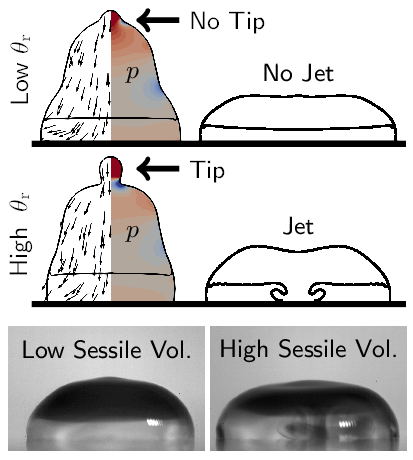Substrate wettability influences internal jet formation and mixing during droplet coalescence

Abstract
The internal dynamics during the axisymmetric coalescence of an initially static free droplet and a sessile droplet of the same fluid are studied using both laboratory experiments and numerical simulations. A high-speed camera captured internal flows from the side, visualised by adding a dye to the free droplet. The numerical simulations employ the volume of fluid method, with the Kistler dynamic contact angle model to capture substrate wettability, quantitatively validated against the image-processed experiments. It is shown that an internal jet can be formed when capillary waves reflected from the contact line create a small tip with high curvature on top of the coalesced droplet that propels fluid towards the substrate. Jet formation is found to depend on the substrate wettability, which influences capillary wave reflection; the importance of the advancing contact angle subordinated to that of the receding contact angle. It is systematically shown via regime maps that jet formation is enhanced by increasing the receding contact angle and by decreasing the droplet viscosity. Jets are seen at volume ratios very different from those accepted for free droplets, showing that a substrate with appropriate wettability can improve the efficiency of fluid mixing.